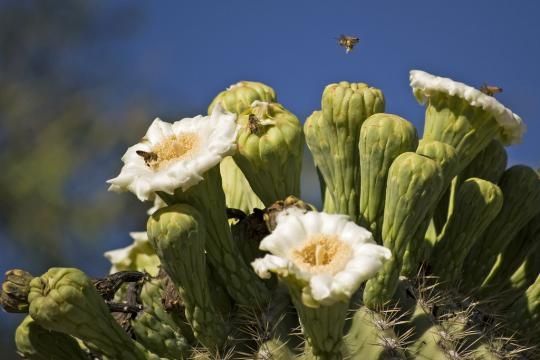|
|
Birds In The Cactus
|
All birds lay amniotic eggs with hard shells made mostly of calcium carbonate. Hole and burrow nesting species tend to lay white or pale eggs, while open nesters lay camouflaged eggs. There are many exceptions to this pattern, however; the ground-nesting nightjars have pale eggs, and camouflage is instead provided by their plumage. Species that are victims of brood parasites have varying egg colours to improve the chances of spotting a parasite's egg, which forces female parasites to match their eggs to those of their hosts.
Bird eggs are usually laid in a nest. Most species create somewhat elaborate nests, which can be cups, domes, plates, beds scrapes, mounds, or burrows. Some bird nests, however, are extremely primitive; albatross nests are no more than a scrape on the ground. Most birds build nests in sheltered, hidden areas to avoid predation, but large or colonial birds—which are more capable of defence—may build more open nests. During nest construction, some species seek out plant matter from plants with parasite-reducing toxins to improve chick survival, and feathers are often used for nest insulation. Some bird species have no nests; the cliff-nesting Common Guillemot lays its eggs on bare rock, and male Emperor Penguins keep eggs between their body and feet. The absence of nests is especially prevalent in ground-nesting species where the newly hatched young are precocial.
Incubation, which optimises temperature for chick development, usually begins after the last egg has been laid. In monogamous species incubation duties are often shared, whereas in polygamous species one parent is wholly responsible for incubation. Warmth from parents passes to the eggs through brood patches, areas of bare skin on the abdomen or breast of the incubating birds. Incubation can be an energetically demanding process; adult albatrosses, for instance, lose as much as 83 grams (2.9 oz) of body weight per day of incubation. The warmth for the incubation of the eggs of megapodes comes from the sun, decaying vegetation or volcanic sources. Incubation periods range from 10 days (in woodpeckers, cuckoos and passerine birds) to over 80 days (in albatrosses and kiwis).
|
|









